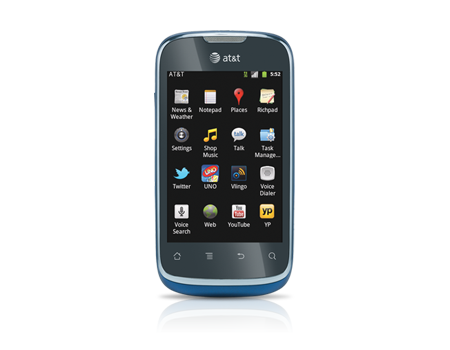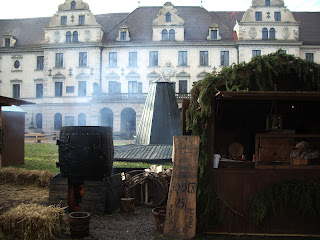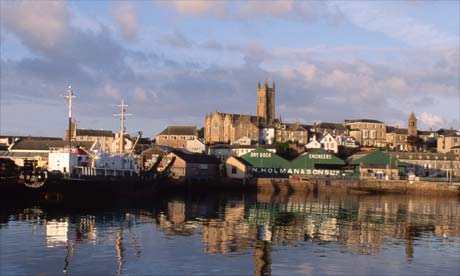“French Polynesia embraces a vast ocean area strewn with faraway outer islands, each with a mystique of its own. The 118 islands and atolls are scattered over an expanse of water 18 times the size of California, though in dry land terms the territory is only slightly bigger than Rhode Island. The distance from one end of the island groups to another is four times further than from San Francisco to Los Angeles. Every oceanic island type is represented in these sprawling archipelagoes positioned midway between California and New Zealand. The coral atolls of the Tuamotus are so low they’re threatened by rising sea levels, while volcanic Tahiti soars to 2,241 meters. Bora Bora and Maupiti, also high volcanic islands, rise from the lagoons of what would otherwise be atolls."
David Stanley, Moon Tahiti
 |
The pool at our hotel on the Island of Tahiti
Moorea is across the water in the background |
 |
| Looking from the Island of Tahiti across to the Island of Moorea |
My husband and I went to French Polynesia in 2008. As a travel agent, I knew a little about
Tahiti and the other islands, since I had booked them for clients, and had
heard from them about their vacations.
But I had never actually experienced it myself. I didn’t realize until we got there, just how
very romantic, and beautiful the place was.
It was Hawaii, before Hawaii became so commercial, only more remote and
beautiful. The water was bluer and
clearer than any I had ever seen. And
because the islands are all surrounded by coral atolls, the water was smooth as
glass, perfect for snorkeling or swimming.
French Polynesia is made up of 118 islands. There are five main island groups - the
Society Islands, the Tuamotus, the Marquesas, the Australs and the Gambier
Archipelago. For this posting I am only going to talk about the 3 islands we visited
on our trip, all of which were in the Society Islands.
 |
The downtown harbor area
of Papeete |
The island of Tahiti is the main island in this
grouping.
Tahiti’s capital city is
Papeete, which is where your plane will land.
If you are going on to another island, you may then change to another
flight and go directly to that island, but if you have the time, spending a few
days on the main island is worth it.
It
is the most commercial of the islands, but still very Polynesian, and the city
itself is small.
There are some
wonderful resorts to stay in.
And plenty
to do.
Tahiti is sometimes called the Island of Love. Many people refer to the word “Tahiti” to
represent all of the islands of French Polynesia, and this is incorrect It is the largest and most populated island
of the 118 islands and atolls that make up French Polynesia, and of course the
most famous.
 |
George riding in Le'Truck
|
It is easy to get around while on Tahiti. You can rent a car, or you can book a Circle
Island Tour which will take you to all the main tourist sights, all of which
are on the main road and easy to see.
They are: Faarumai Waterfalls, Botanical Gardens, The Blowhole, Fern
Grotto, Lookout Point, Point Venus and the Lighthouse, and Kings Tomb. If you just want to get from your hotel to
the downtown area, then hop on Le’Truck.
It stops at most hotels and picks up passengers and goes to the
downtown area. For that matter, you can
wave it down from any wide spot on the road and it will stop and pick you
up. Riding the Le’Truck should be part
of your Tahitian experience.
 |
| Le Marche or Daily Market in Papeete |
The downtown area of Tahiti has quite a few good shops, and
of course the thing they will be selling the most, is the famous Tahitian black
pearls. They are for sell
everywhere. There is even a museum
dedicated to them. The main attraction
for many visitors to Papeete is the Le Marche or Daily Market. This market is in a sense, the heart of the
city. It has become a tourist and traveler's sightseeing favorite due to its
brightly colored vendors and attractive Tahitian products. Wander among the
many stands and displays to find such products as luscious ripe fruits and
vegetables, monoi oils and scented soaps, vanilla beans, cakes and pies, fruit
preserves, dancing costumes and clothing, woven hats and bags and shell
necklaces. 2 floors worth of vendors, including the finest display of floral
arrangements of orchids, and anthuriums, marigolds and daisys and other flowers
you will ever see. Located in the heart
of Papeete, just one block inland from the center of the waterfront, it's not
hard to find.
 |
| George on our beach in Moorea |
The island closest to Tahiti is Moorea, which is where
Tahitians go to vacation. The large
majority of travelers arriving to Moorea come by ferry from Tahiti. If you’ve pre-arranged for a pickup with your
hotel, be on the lookout for someone looking for you. If you haven’t made arrangements, then your
best bet is take Le’Truck to your hotel.
They will be at the ferry whenever it comes in, and they will take you
to your hotel, anywhere on the island.
You can also rent a car, and I recommend at some point that you do this
for at least one day, and drive around the whole island, stopping to see some
of the sights.
Upon arrival to Moorea Island in the heart of French
Polynesia, you will immediately be awestruck by it's natural beauty.
Its jagged peaks, cloaked by lush greenery
and encircled by the deep blue of the ocean and sky are everyone's dream of
Polynesia.
Moorea is a triangular shaped
island encircled by a lagoon of translucent green, fringed by an azure blue
Polynesian sea.
 |
| Cook's Bay, Moorea |
Moorea is unique among the Society Islands in having
magnificent expanses of both white and black sand beaches, and they are some of the
best beaches in the world.
Filled with Polynesian history and lore, Moorea is one of
the most fascinating and completely relaxing places you could dream of
vacationing. We spent a week on the
island, in a timeshare condo on Cook’s Bay.
We were lucky to have a small kitchen and a wonderful balcony with a
table, where we had breakfast every morning, overlooking the bay. We found that after 7PM there was nothing
open anywhere near us, no TV and nothing to do but relax and read. Even during the day, there are not a lot of
things around, the island is a place to go and relax.
 |
| View of Opunohu Bay from above |
We did rent a car one day and drove around the island,
stopping at different beaches to snorkel, and then on to the hilltop lookout
high in the interior or the island.
There is a view there that was once reserved only for the gods – on one
side lies exquisite Cook’s Bay, and the other a deep and equally entrancing
Opunohu Bay. Their waiting arms reach up to embrace you.
Our drive around the island took all day, partly because we
did stop to swim and snorkel, and have lunch at a cute little restaurand, where
I had the best salad of my entire life.
We also stopped at a place where they made pineapple liquor. They gave some samples and I ended up buying
some to take back to the condo for later.
They also sold regular juice there and other souvenirs. And in the
small towns around the island we stopped and looked around, and had ice
cream cones at one stop. By the time we
got back to the condo and turned in our car, it was dark, so we ordered a pizza
from down the road. I will go into food,
and the cost of it later in this posting.
 |
| Our boat docked on the motu |
There are all sorts of activities you can book, if the
relaxing is just too much for you.
One
of the more popular things to do is to take a boat around the island and have a Motu Picnic.
Relaxing on a motu is one of the most
wonderful things you can do. The island of Moorea has 2 motus that you can
enjoy. The larger one is called Motu Fareone and the smaller one Motu Tiahura.
They are both beautiful little islets with white sandy beaches and are located
on the Northwestern part of the island, within the lagoon.
 |
| Our motu picnic lunch |
After you arrive at the motu, a picnic lunch will be prepared for you. We were also given a demonstation of how to properly crack a coconut, and then given a very good coconut drink. A
typical motu picnic will consist of local fruits and juices, bread, and
polynesian lunch style foods such as fish, rice, chicken, or other gourmet
items. The menu will depend on your host.
Usually, these motu picnics are combined on a lagoon excursion or circle
island tour of some kind, and will last anywhere from 1-4 hours, but 1/2 day or
even full day motu hangouts are available on your request
The one we went on was all day and included several stops to
snorkel, including one stop that was full of sting rays, which we got into the
water with and were able to touch them and feed them.
 |
| My spot on the beach each day |
But for me, spending the days on the beach, in the water,
snorkeling or kayaking, or just swimming, is what going to the islands is all
about. We got up each morning and with
our lunch packed, headed for the water.
It was one of the most relaxing vacations we had had in years. Unlike so many places we go, where there are
so many sights not to be missed, where you are gone from morning to night, this
one was laid back and casual. Not that
we didn’t do things other than the beach, we did a little bit of shopping. I even bought myself the requisite black
pearl necklace, and one for my mom as well.
And we did the drive the one day and the all-day motu picnic the other
day, and one evening we went to the crab races, which were amusing. We went to a Tahitian Dance Show which was
put on by the timeshare we were at, and listened to one of the old-time
residents talk about the Tahiti of his past.
But mostly we spent our days in our swimsuits or shorts, and just took
life as it came.
 |
| Our condo on Moorea, we were on the upper floor by the red flowers |
After our week in Moorea, we took an inter-island flight to
Bora Bora for a 3 day stay there.
The flight took under one hour from the island of Moorea. Below us as we came in was the
island of Bora Bora, with a lagoon resembling an artist's palette of blues and
greens. It was love at first sight. There is a motu that circles the lagoon like a
delicate necklace and there are perfect white-sand beaches.
 |
| Flying into Bora Bora |
Our hotel sent a boat to pick us up and take us to the
hotel, and we were given a flower lei greeting.
We had booked an over-water bungalow there. It was the typical thatched roof bungalow,
with our own porch and ladder down to the water. I could get up in the morning and step right
into the water and go for a swim. The room itself had a canopy bed, which kept the thatching from blowing down on you at night, but no kitchen. But being over the water made up for that. There was still no TV, which was fine with us.
 |
| Our over-water bungalow on Bora Bora |
Bora Bora has even less population, less night-life, and less shopping opportunities than the other 2 islands. If we were relaxed before, we had even more reason to relax there. And if anything, the water was even more inviting and beautiful than on Moorea, although it would hardly seem that was possible. We had the same activities available to us here. We opted to again go on the motu picnic, which also gave us an island tour from the boat and some snorkeling time. The rest of the time there, we just swam and snorkeled right from the porch of our bungalow.
 |
| George and I having dinner at Bloody Mary's |
We did have to go out for food there, and one of the nights we went to Bloody Mary's. If you have seen the movie or play "South Pacific", then you should me familiar with Bloody Mary. She was a character in the movie, and parts of the movie were filmed in the islands. Bloody Mary's is a famous restaurant, and just about everyone who goes to Bora Bora has to go their for dinner one night. It may be touristy, but the food is good and fresh, the atmosphere is fun, and the prices are as good as anywhere else on the islands.
 |
Where we had the motu picnic
on Bora Bora |
As for the price of food, I did say that I would write about that in this posting. It is worth mentioning that one of the most expensive things about a trip to the French Polynesian islands, is the food. I knew this before we went, but until I got there I didn't really believe that it would be that bad. We were a little shocked on some things. I can understand that things have to be shipped from the mainland, so it could be more expensive, but even fresh fish that was caught there, was expensive.
 |
| Me enjoying a drink |
As an example, the first night we were in Moorea, the timeshare restaurant was having a special fish dinner. We were told it was a special night, and we couldn't pass it up as the prices were very low. However, a plate of mahi mahi, some fries and a small salad cost us $40 each, and this was a special price. We did also get a watered-down mai tai with it. One afternoon we decided to go to the pool in Bora Bora and have lunch at the cafe there. The cheapest thing on the menu was a hamburger, which was also $40, and that did not come with fries or a drink. We ended up walking down the street to a little bar along the road, where we got a hamburger, fries and a beer, for $26 each. The small pizza we ordered in Moorea was over $20. I think one of the best deals on the islands is the motu picnics. I would have paid for the snorkeling trip anyway, and it came with a really good lunch, which filled us up. On those nights we ate a very light dinner.
 |
This is the salad I had on the drive around Moorea
It was the best salad I have ever had, even if
it was a splurge |
Knowing ahead of time that the cost of food would be high, I did take some things with me. Before leaving home I bought some canned tuna, a small jar of mayonnaise, some breakfast bars,and some snack items. I have a small collapsible cooler which I also packed. All of those things fit down inside my snorkle bag and came with us. We had a kitchen at the condo in Moorea. When we first arrived we went to a small grocery store where I purchased bread, juice, beer, soda, cheese and salami, yogurt and some fresh fruit. The best buy on the island was 3 pineapples for about $1. We had fruit, yogurt and breakfast bars each morning on our balcony. We had sandwiches for lunch. So then we only had to buy dinner. We did find a few bargains there. A local told us about a truck that pulled into the nearby town each evening and sold chicken and potatoes from the truck. We went down one evening and bought a whole chicken and some really good potates. The total cost was around $15, and we got 2 meals out of it. We did try several of the local restaurants, and yes, it was expensive. Usually dinner for 2 at most of the places we tried, ran us around $100, including Bloody Mary's. The food was good though, the fish especially fresh. And since we had saved on breakfast and lunch, I didn't feel it was that much of a splurge.
We spent 10 nights total between the 3 islands, and they were some of the most relaxing, restful, days, with the most beautiful days on the water, wonderful sunsets, warm weather and the best snorkeling of any place on earth. If you are looking for a place to just get away and do nothing, this is the best place to do that.
 |
| Having a relaxing time on Bora Bora |


 In 1986 the national parks started its passport program. You can get a passport book at any of the
national parks or by ordering it online.
The passport book is also a guidebook and it is an easy way to learn
about and explore all of our national park sites. It also includes maps, illustrations and
photographs. Spaces in each region are
designated for you to collect rubber stamp cancellations at each national park
site you visit. The cancellations, similar to those received in an
international passport, record the name of the park and the date you visited. There is also a commemorative stamp series
which can be purchased and placed in the booklet. The photos used on the stamps are taken by
park employees and volunteers and are selected through an annual photo contest.
In 1986 the national parks started its passport program. You can get a passport book at any of the
national parks or by ordering it online.
The passport book is also a guidebook and it is an easy way to learn
about and explore all of our national park sites. It also includes maps, illustrations and
photographs. Spaces in each region are
designated for you to collect rubber stamp cancellations at each national park
site you visit. The cancellations, similar to those received in an
international passport, record the name of the park and the date you visited. There is also a commemorative stamp series
which can be purchased and placed in the booklet. The photos used on the stamps are taken by
park employees and volunteers and are selected through an annual photo contest.














































